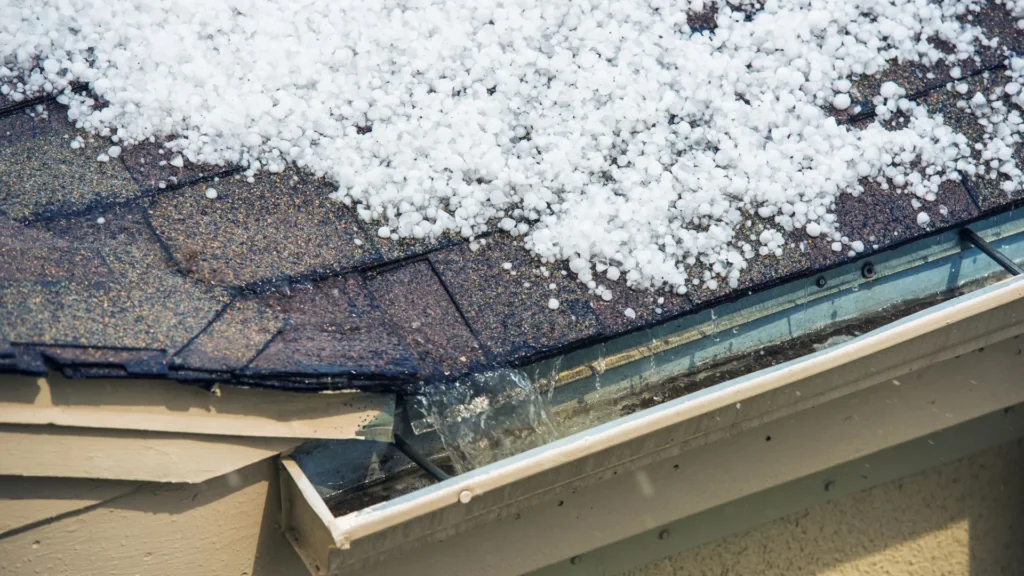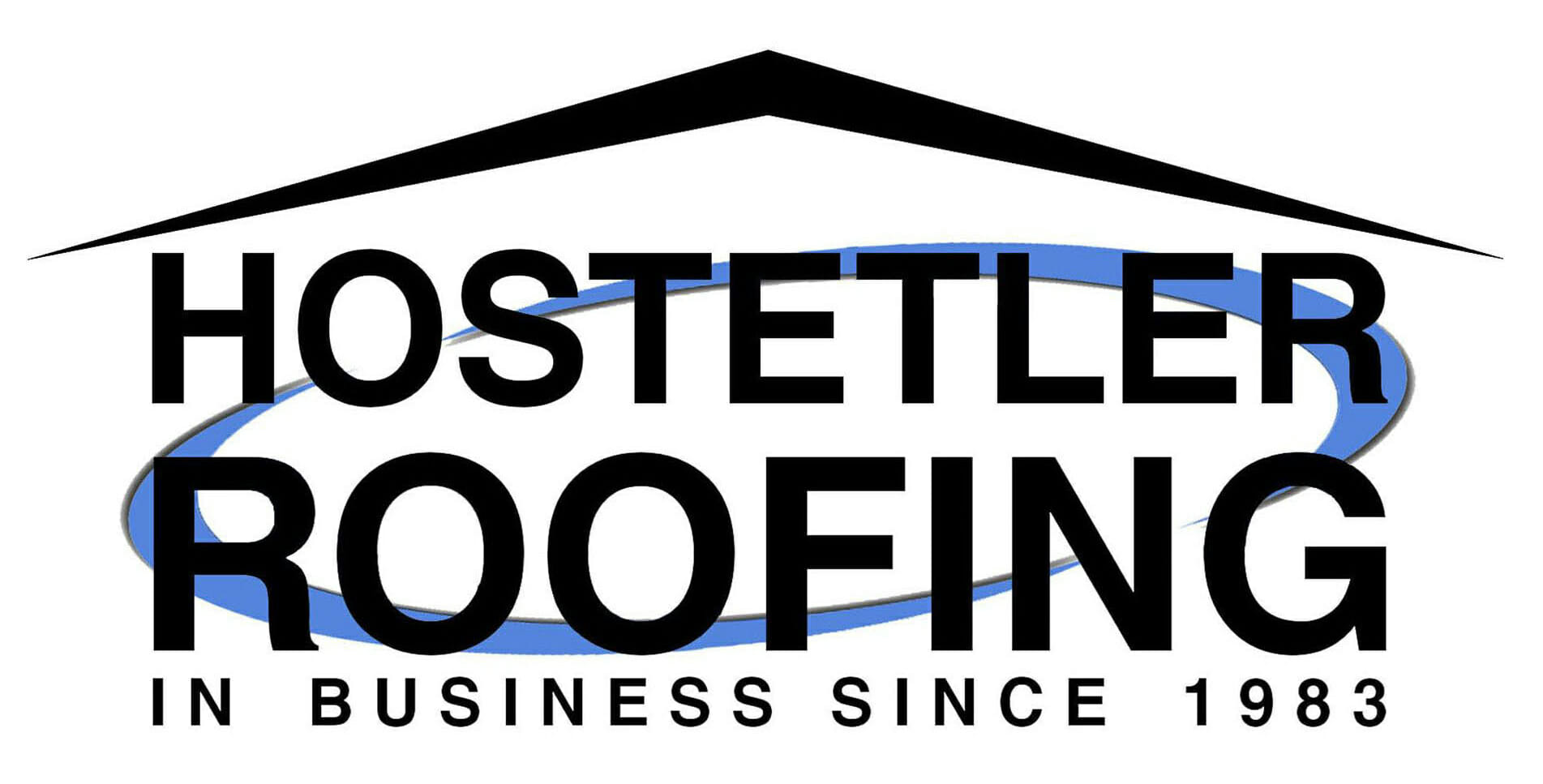
Living in Texarkana, you’re no stranger to hailstorms that can wreak havoc on your property. Hail can be particularly damaging to roofs, compromising their integrity and leading to costly repairs if left unaddressed. Understanding the impact of hail and what signs to look out for can help you take proactive steps to protect your home. In this article, we’ll delve into the size of hail that can cause roof damage and highlight key indicators to watch for. If you suspect hail damage, don’t hesitate to reach out to Hostetler Roofing, your trusted roofing expert in Nashville Arkansas, for a comprehensive inspection.
What Size Hail Causes Roof Damage?
Hail comes in various sizes, ranging from small pellets to larger chunks that can cause significant harm to your roof. While any size of hail has the potential to cause damage, the severity of the damage is often related to the size of the hailstones. Here’s a general guide to understanding the impact of hailstone sizes on roofs:
- Pea-sized Hail (around 1/4 inch): Pea-sized hail typically doesn’t cause significant damage to most roofing materials. However, it’s worth noting that repeated impacts over time may lead to wear and tear, especially on older or worn-out roofs.
- Marble-sized Hail (around 1/2 inch): Marble-sized hail may cause minor damage to your roof, such as small dents or granule loss on asphalt shingles. While the immediate effects may not be substantial, it’s essential to have your roof inspected for potential long-term issues.
- Quarter-sized Hail (around 1 inch): Quarter-sized hail can cause noticeable damage to your roof. It can result in cracks, punctures, or fractures on asphalt shingles, which may lead to leaks and compromise the overall structural integrity of your roof.
- Golf Ball-sized Hail (around 1.75 inches): Golf ball-sized hail poses a significant risk to your roof. It can cause severe damage, including larger cracks, shattered shingles, or even punctures. These impacts can lead to water infiltration and subsequent interior damage if not addressed promptly.
- Tennis Ball-sized Hail (around 2.5 inches): Tennis ball-sized hail is capable of inflicting substantial damage on roofs. It can cause extensive shingle breakage, significant dents, or even structural damage. Immediate attention and repairs are crucial to prevent further issues.
Common Signs of Hail Damage on Roof
Following a hailstorm, it’s essential to conduct a thorough inspection of your roof to identify any potential damage. Here are key signs to watch for:
- Visible Damage: Inspect your roof for visible signs of hail damage, such as dented or cracked shingles, displaced or missing shingles, or damage to other roofing materials.
- Granule Loss: Check for granule accumulation in your gutters or downspouts. Granule loss can weaken shingles and expose them to further damage from UV rays.
- Leaks or Water Stains: Look for signs of water leaks or stains on your ceilings or walls, indicating that hail damage has compromised your roof’s waterproofing.
- Damaged Flashing: Examine the flashing around chimneys, vents, and skylights for any dents, cracks, or signs of dislodgement caused by hail impact.
- Dented Gutters or Downspouts: Hailstorms can also damage your gutters and downspouts. Check for dents, cracks, or other signs of impact on these components.
Remember, hail damage may not always be immediately apparent, and its impact can worsen over time if not addressed promptly. If you suspect hail damage or notice any of these signs, it’s crucial to seek professional assistance.
What to Do After a Hailstorm
If your area experiences a hailstorm, follow these steps to assess and address potential roof damage:
- Inspect your roof safely – If possible, check for visible damage from the ground using binoculars. Avoid climbing onto the roof unless you have experience doing so safely.
- Document the damage – Take clear photos and notes for insurance claims. The more evidence you have, the better your chances of getting coverage for repairs.
- Check for leaks – Inspect your ceilings and attic for water stains or moisture accumulation.
- Contact your insurance provider – File a claim if there’s significant damage. Many homeowner insurance policies cover hail damage, but it’s crucial to report the damage as soon as possible.
- Schedule a professional inspection – A roofing expert can determine the extent of the damage and recommend repairs or replacement. You can count on us by calling +1 870-557-4797 and we will provide a fee inspection.
- Act quickly – Delaying repairs can lead to more extensive and costly damage over time. The sooner you address hail damage, the more you can prevent secondary issues like leaks and mold growth.
Preventive Measures to Reduce Hail Damage
While hailstorms can’t be prevented, you can take steps to minimize their impact on your roof:
- Install impact-resistant shingles – Some shingles are designed to withstand hail damage better than standard ones. Class 4 impact-resistant shingles, for example, are tested to endure significant impacts without cracking or breaking.
- Regular roof inspections – Having your roof checked periodically can help detect and fix minor issues before they become serious.
- Consider protective roof coatings – Some coatings can provide an extra layer of protection against hail, particularly for flat or metal roofs.
- Upgrade your roofing material – If you live in an area prone to hailstorms, consider switching to materials like metal roofing or synthetic shingles, which are more resistant to impact.
- Trim overhanging branches – Strong winds during a hailstorm can break tree branches, causing additional roof damage.
- Install hail guards on roof-mounted equipment – If you have solar panels, skylights, or HVAC units on your roof, protective hail guards can help prevent damage.
Conclusion
Hail damage can range from minor to severe, depending on the size of the hailstones and the condition of your roof. Understanding how different hail sizes affect roofing materials can help you take proactive steps to protect your home or business. Regular maintenance, timely inspections, and impact-resistant roofing materials can help reduce the risk of severe damage.
Trust Hostetler Roofing for Hail Damage Repairs
If your home has been hit by a hailstorm, don’t wait for small damage to turn into costly repairs. Contact Hostetler Roofing today for a free roof inspection and expert repairs you can trust. Our experienced team will assess your roof, explain any damage in simple terms, and provide reliable solutions to keep your home safe. Based in Nashville, Arkansas, we proudly serve homeowners and businesses throughout the Ark-La-Tex region. Whether you need minor repairs or a full roof replacement, we’ve got you covered!
Don’t wait until small hail damage turns into major roofing issues. Contact Hostetler Roofing today for a comprehensive hail damage inspection and reliable repair solutions. Safeguard your home with the expertise and professionalism of Hostetler Roofing.
You May Also Like To Read: How To Fix A Leaking Roof

